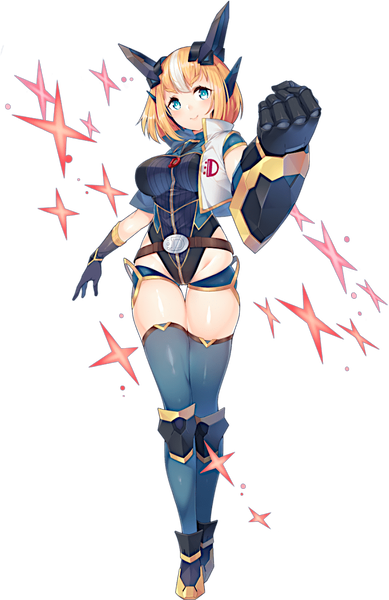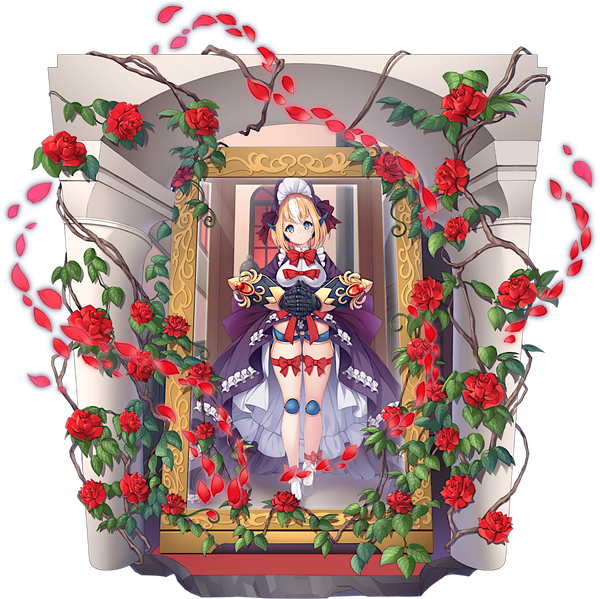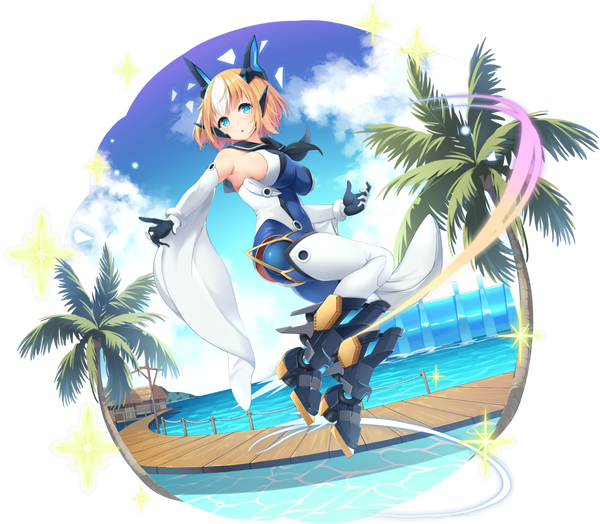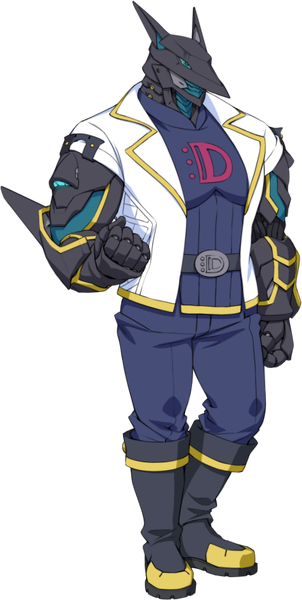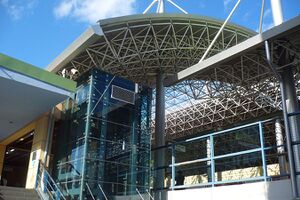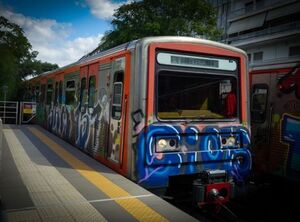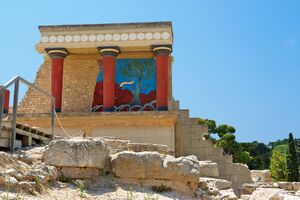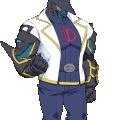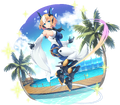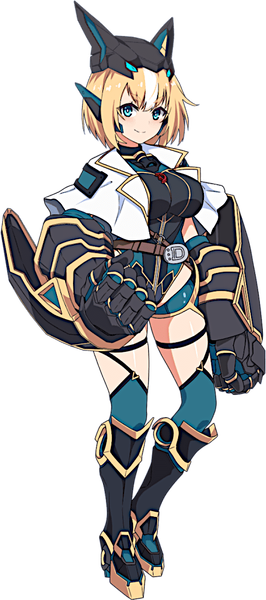
Iraklion
| Iraklion | |||||
|---|---|---|---|---|---|
| Japanese Name | イラクリオン | ||||
| Weapon | |||||
| Race | Golem | ||||
| Nationality | |||||
| Birthday | May 5 | ||||
| Constellation | Taurus | ||||
| Talents | Can transform into various tools, Perpetual motion | ||||
| Likes | Doggan Gang, Being useful to humans, Functional beauty | ||||
| Dislikes | Being called a robot, Master's enemies | ||||
| Strengths | Can risk his own life for his Master | ||||
| Weaknesses | Extremely short-tempered, Explodes when too angry | ||||
| Hobbies | Golem-like things | ||||
Pwahahahaha! Bri... I mean Iraklion's, Total. Renewal. Successful! I'm sorry to worry you, Master! But rest assured! Even if I explode and am reduced to dust, I can reform myself by absorbing in surrounding matter! Eh, you think that I'm Bright that was revived by that function? I'd say you've got the wrong guy!
Layers
| Icon | Title | Release Date | Where to Obtain |
|---|---|---|---|
| [Doggan Gang's New Golem‽] Iraklion | 2023 April 7 | [Training Camp - Iraklion Whisper] Event Reward | |
| [Servant of Mankind] Iraklion | 2023 April 1 | [Explosive Opening! Neo Doggan City] Event Reward | |
| [Robot Slayer] Iraklion | 2023 March 31 | 2.5 Anniversary Limited Gacha 3 | |
| [Together With Western Dolls] Iraklion | 2024 February 22 | [Doll Golem and Fluffy Swimming] Limited Gacha |
Skills
Profile
Bright is one of Dr. Gloria's two 'villain' sidekicks, the other being Whisper. Bright is Dr. Gloria's most loyal henchman and is very skilled in combat, pairs well with Whisper to be the muscle of Doggan Gang, while their master Dr. Gloria is the brains of the trio.
Bright is very loyal and will follow any orders from its master to commit misdeeds she requested. Bright is able to self-destruct and reform as one of its attacks to blow away or injure enemies who stand in its way.
Bright prefers to directly complete objectives as quickly as possible, which is the opposite of Whisper's style of handling objectives. Bright vehemently identifies itself as a golem, he is quick to anger if any individual calls him a robot otherwise, which he usually responds by detonating himself.
Bright is later remodelled into his current form - Iraklion by Dr. Gloria in Explosive Opening! Neo Doggan City
Trivia
- Iraklion's default form is Bright, and has his new remodel into Iraklion after Explosive Opening! Neo Doggan City.
- Iraklion aka Bright's design and backstory is based on the minotaur of Greek mythology. The horns on his head resemble the horns of a bull (minotaur), and the location he was trapped in is based on Palace of Knossos in Iraklion/Heraklion, Greece.
- In his form as Bright, he was trapped in a labyrinth with no way to get out for centuries, his explosions likely causing earthquakes. It was only until Dr. Gloria and Whisper's fateful encounter with him that he was finally freed from the maze, and thus he swears undying loyalty to his master Gloria, while his name Bright is given by Gloria for bringing them 'light' - a ray of hope, and also because the name of the maze he's trapped in is also named Shiny Shiny Cave.
- Iraklion's [Leave Mobility to Me] Flying Circus costume is from the collaboration event Aokana - Flamarine Across the Blue with Aokana - Four Rhythms Across the Blue.
Counterpart
Irakleio (Greek: Ηράκλειο, lit. 'Heraklion'), also known as Iraklio on signage, is an Athens metro station in Irakleio, Attica, Athens, Greece. It is marked at the 19.246 km from the starting point in Piraeus station of Line 1. Initially, the station served the Athens–Lavrion Railway and Lavrion Square-Strofyli railway, ran by the Attica Railways.
From 1929 the Lavrion branch was operated by Piraeus, Athens and Peloponnese Railways. The station was closed in 1938 for Kifissia traffic but remained open for Lavrion trains until 1957/1962. At the same location, the present station of EIS was opened on 4 March 1957, using the same name. It was the northernmost terminus of EIS until Kifissia station was reopened on 10 August 1958. The station has two passenger platforms and a reversing siding.
Its current design dates back to 2004, when all the stations on Line 1 were renovated (in stages, 2003-2004) in view of the Athens Olympic Games. The station has two side platforms and a train siding. Heraklion station was the northbound terminal of the line from its inauguration until the extension of the network to Kifissia on 10 August 1957.
Initially the station served the railway lines Athens - Lavrio, and Lavrio - Strofylion, via Attica Railways. From 1929, the Lavrion branch was operated by the Piraeus - Athens - Peloponnese Railway. The station was closed in 1938 on the route to Kifissia, pending electrification, but remained open for trains to Lavrion until 1957-1962. Wikipedia
Knossos (also Cnossos, Ancient Greek: Κνωσσός, romanized: Knōssós) is the largest Bronze Age archaeological site on Crete and has been called Europe's oldest city. Settled as early as the Neolithic period, the name Knossos survives from ancient Greek references to the major city of Crete. The palace of Knossos eventually became the ceremonial and political centre of the Minoan civilization and culture. The palace was abandoned at some unknown time at the end of the Late Bronze Age, c. 1380–1100 BC; the reason is unknown, but one of the many disasters that befell the palace is generally put forward.
The site of Knossos has had a very long history of human habitation beginning with the founding of the first Neolithic settlement (c. 7000 BCE). Neolithic remains are prolific in Crete. They are found in caves, rock shelters, houses, and settlements. Knossos has a thick Neolithic layer indicating the site was a sequence of settlements before the Palace Period. The earliest was placed on bedrock.
In Greek mythology, King Minos dwelt in a palace at Knossos. He had Daedalus construct a labyrinth, a very large maze (by some connected with the double-bladed axe, or labrys) in which to retain his son, the Minotaur. Daedalus also built a dancing floor for Queen Ariadne. The name "Knossos" was subsequently adopted by Arthur Evans. The myth of the Minotaur tells that Theseus, a prince from Athens, whose father was an ancient Greek king named Aegeus, the basis for the name of the Greek sea (the Aegean Sea), sailed to Crete, where he was forced to fight a terrible creature called the Minotaur. The Minotaur was a half man, half bull, and was kept in the Labyrinth – a building like a maze – by King Minos, the ruler of Crete. The king's daughter, Ariadne, fell in love with Theseus. Before he entered the Labyrinth to fight the Minotaur, Ariadne gave him a ball of thread which he unwound as he went into the Labyrinth so that he could find his way back by following it. Theseus killed the Minotaur, and then he and Ariadne fled from Crete, escaping her angry father. Wikipedia
Map
Gallery
- Pages using Tabber parser tag
- Pages using DynamicPageList3 parser tag
- Weapon Gauntlet
- Golem
- St. Iris
- Taurus
- Element Blow
- Element Light
- Element Wind
- Element Fire
- Train Knights
- Doggan Gang
- Greece

